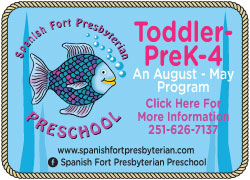Hailey Magee coined the thought-provoking phrase, “Imagine how different the world would be if little girls were taught to set boundaries as often as they were taught to be polite.” For days, I ruminated on the question, “How can we teach all children to set and respect healthy boundaries?” When I filtered this question through the theories of attachment and development, I determined that lessons on boundaries should be taught in this order: Respecting, Understanding, and Setting.
In my practice, I have observed repeatedly that when children who do not know how to respect boundaries are allowed to set their own, chaos reigns. If you struggle with boundaries, I strongly recommend reading Henry Cloud’s book, Boundaries.
As a parent, it is vital for you to master the art of boundaries because this is one of the most important lessons you will teach your children. Regarding development, young children require the greatest number of boundaries. After children learn to respect boundaries, they earn the right to question them. When children question boundaries, it is the parent’s job to help them understand why boundaries are necessary and important. Children are mature enough to set their own boundaries only after they can respect and understand the necessity of boundaries.
Let me give you some very specific examples of boundaries and the role they play in establishing a secure attachment to your child.
Respecting Boundaries: Use your physical body, not simply words, to help young children respect boundaries. For example, if a young child is throwing cars instead of rolling them, just pick up the cars and put them away or put your hand over their hand to show them how to play appropriately. All you need to say is, “I will not let you throw the cars.”
You do not need to justify or explain boundaries to a young child. Young children learn best by doing. These clear physical boundaries and your presence help them feel secure.
As children grow older, it is essential to ensure that boundaries are clearly defined. You must state the boundaries, the consequences if the boundaries are broken, and expect the child to be able to restate both to you. These definite limits help children feel secure. Set your child up for success by ensuring your expectations can be met.
Understanding Boundaries: Once children can consistently respect boundaries, they have earned the right to be part of the discussion. Allow them to question why the boundary is necessary, share their point of view, and negotiate new boundaries. These conversations can be challenging, but they build mutual trust and strengthen parent/child bonds. You must continue to hold your child accountable for what is his/her responsibility in the boundary. Please remember that while behavior can be placed in a boundary, feelings cannot.
Setting Boundaries: After a child has proven that they respect and understand boundaries, he/she deserves the opportunity to begin setting some. A great place to start is by allowing your child to set boundaries on friendships. It is appropriate to expect your child to be kind and respectful to all people, but you should not expect them to be friends with everyone.











